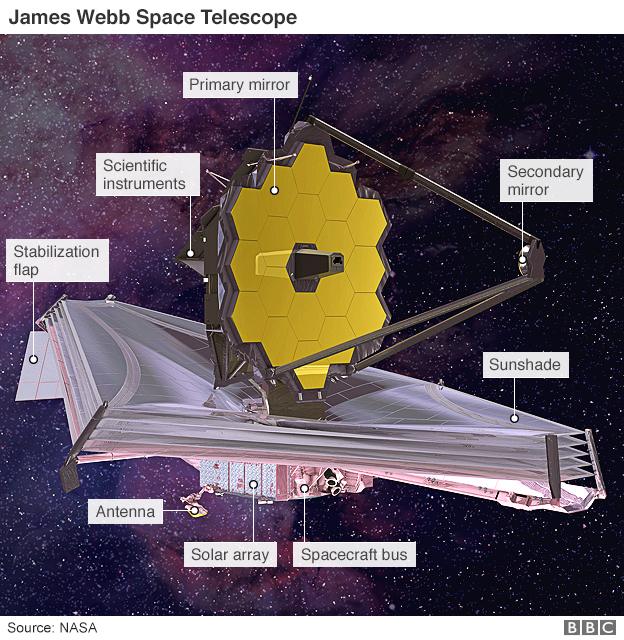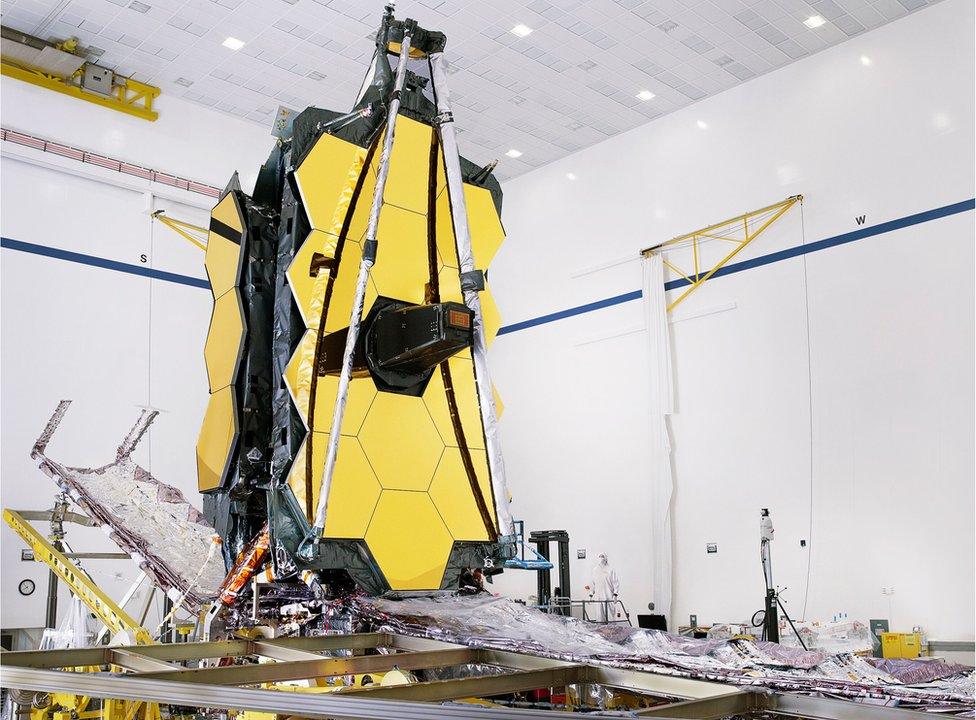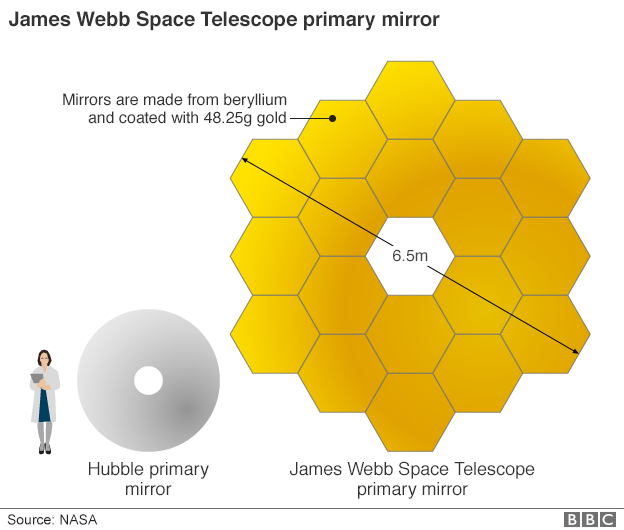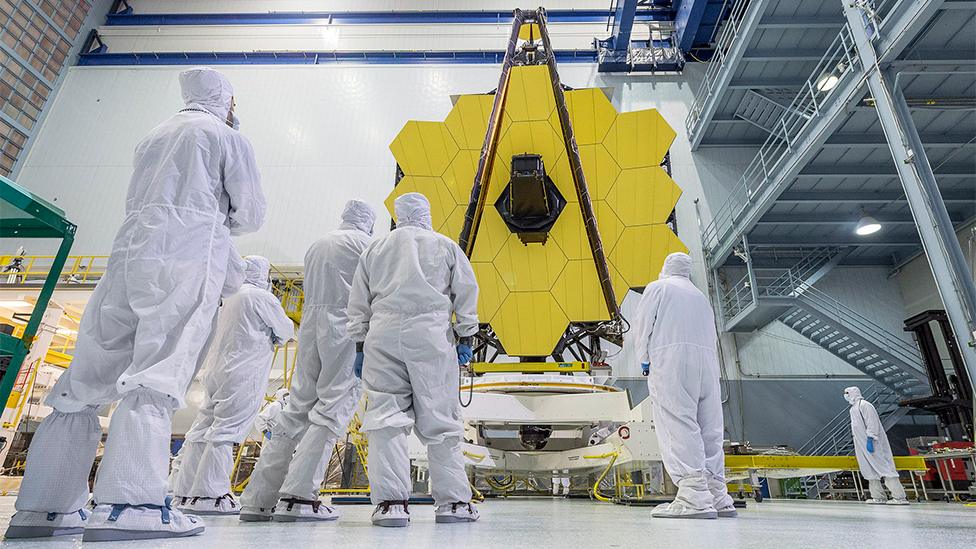James Webb Space Telescope comes together
- Published

Northrop Grumman engineers lower the telescope segment on to the shield and spacecraft

The successor to the Hubble observatory has reached a key milestone in its construction.
All the elements that make up the James Webb Space Telescope (JWST) have been brought together for the first time.
It sets the stage for some critical tests that will hopefully lead to a launch to orbit sometime in 2021.
JWST will use a colossal mirror and state-of-the-art instruments to try to see the glow from the very first stars to shine in the Universe.
It will also have the power to resolve the atmospheres of many of the new planets now being discovered beyond our Solar System, and to analyse their atmospheres for the potential for life.
The telescope is a joint endeavour of the American (Nasa), European (Esa) and Canadian (CSA) space agencies.


It can be thought of as having three main parts - a telescope (mirrors and instruments); a big sunshield to shade its sensitive view of the sky; and a spacecraft unit that will manage the observatory's day-to-day operations in orbit.
These three segments have finally been bolted together at a Los Angeles factory facility belonging to the prime contractor, Northrop Grumman.
All the components that have gone into making JWST have been repeatedly tested - at both the individual and the integrated level.
That cycle of testing continues now that the three major segments are connected.

JWST's big mirror can fold back - to make it fit inside its launch rocket

A vital test will be a demonstration that Webb can fully deploy its sunshield.
This tennis court-sized parasol is made up of five extremely thin layers of Kapton insulating film. Its job is to put the mirrors and four instruments completely in the shade when observing the cosmos. Stray light from our Sun would otherwise warm surfaces and swamp the faint infrared radiation coming from distant galaxies.
But to be effective, the shield must roll out properly without kinks and without tears.
"This is an exciting time to now see all Webb's parts finally joined together into a single observatory for the very first time," said Gregory Robinson, the Webb programme director at Nasa HQ in Washington, DC.
"The engineering team has accomplished a huge step forward and soon we will be able to see incredible new views of our amazing Universe."


Anyone who has followed the story of JWST knows it is running late - very late, by more than decade.
The project has also gone massively over-budget. The cost after build, launch and five years of operations is estimated to be about $10bn. But this is a venture that astronomers fully expect to be a revelation.
The current Hubble telescope, for example, is restricted in how deeply it can see into space - and therefore how far back in time it can see. Its 2.4m-wide mirror cannot quite collect enough photons, and its instruments are not sensitive in just the right portion of the electromagnetic spectrum to be able to probe the era of first star formation - more than 13.5 billion years ago.
JWST in contrast has a 6.5m-wide mirror - seven times the light-collecting area of Hubble - and its instruments will be perfectly tuned in the infrared to pick up the light from these founding stars.
- Published27 June 2018
